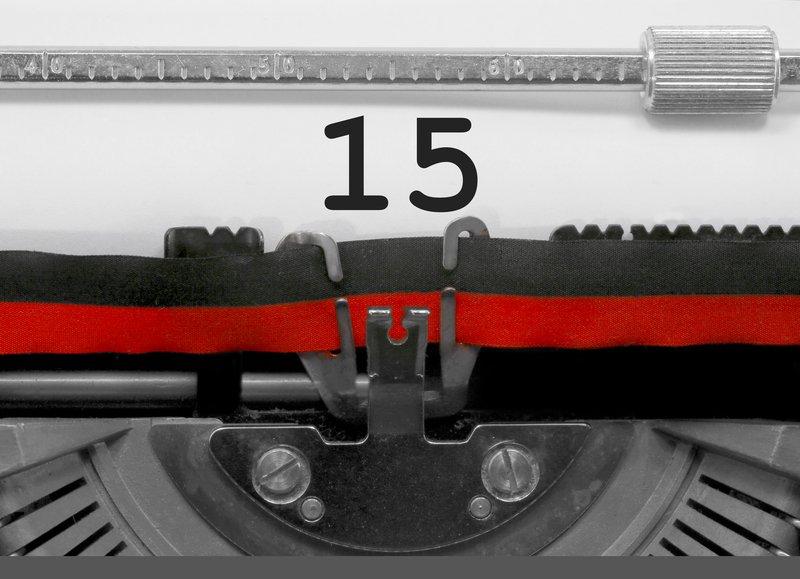When you are starting a business, sitting down and grappling with Health & Safety legislation isn’t one of your top priorities. It’s fair to say that it’s not one of the more exciting parts of running your own business, and it doesn’t bring in any money.
However, with the average fine for Health & Safety prosecutions being over £30,000, it can be very costly if you don’t stay on the right side of the law. With so much at stake, we asked Louise Hosking of Hosking Associates to explain what small businesses need to do;
Introduction
We always enjoy working with companies who are just starting out. Creating and maintaining safety management systems is a more daunting task once a business has grown. Many companies who come to us after significant growth can have a mountain to climb. My advice is to start thinking about safety early on and establish your arrangements at the start when you have fewer risks and fewer people.
From 1st October 2015, the Health & Safety at Work Act 1974 (General Duties of Self-Employed Person) (Prescribed Undertakings) Regulations 2015 comes into force. Health & Safety law will no longer apply to self-employed people who do not pose a risk to others. This is aimed at self-employed people who are generally office based and probably work from home such as writers or online traders.
However, everyone must follow Health & Safety law if they are working in construction (and especially a duty holder under Construction (Design & Management) Regulations 2015), agriculture, the railways, in the asbestos industry or where their activities are covered by Gas Safety (Installation & Use) Regulations 1998.
For everyone else, and for those who employ others, the law applies. UK Health & Safety legislation can be downloaded for free from the HSE website. In the last 8 years, there has been a conscious effort to remove laws which are no longer required or duplicated. Work has also been undertaken to provide much clearer guidance.
The key pieces of legislation relevant to everyone are Health & Safety at Work Act 1974 and Management of Health & Safety at Work Regulations 1999. Guidance on the latter can be found within HSG65 which describes how to implement the legal requirements.
These laws expect businesses to identify how their actions, or lack of action, might cause harm to their employees, contractors, visitors or others. Quite simply, if a business creates a risk they must apply the necessary resources to manage it. There isn’t usually a prescribed instruction within UK safety law which tells leaders exactly what they have to do – it’s basically all about risk assessment and compliance. Until something goes wrong, this can be a difficult concept to grasp.
Safety legislation can be very client-led because clients have to be able to demonstrate that the contractors or consultants they engage have the skills, knowledge, experience and organisational capability to do the job. This may mean small companies have to be able to demonstrate they have safety arrangements in place which may feel complicated at the start, but it doesn’t have to be.
Free Tide Business Bank Account + £50 Cashback!Simply open a free business current account to qualify + 12 months free transactions. Read our Tide review |
Companies with fewer than 5 people
Companies who employ fewer than 5 employees do not have to write down their safety arrangements or have a policy. Where this is the case, in can be difficult to provide evidence to a client to demonstrate relevant arrangements have been considered.
My advice is for these organisations to show how they have considered safety by creating a short safety strategy for their company which includes information on;
- Responsibilities of key people
- Emergency arrangements including access to first aid
- Provision of training in relevant H&S matters
- Specific risks within the company
Risk Assessments
Risk assessment involves identifying hazards within the business, considering who might be exposed to these, and evaluating whether the level of risk is acceptable for the business as a whole. Controls must be implemented following a hierarchy of risk control which means;
- Avoiding or taking away risk first
- Changing the way a process is undertaken so it’s safer
- Introducing barriers or engineering controls
- Providing personal protective equipment as a last resort
Risk assessments can feel daunting and time consuming, but they are useful if undertaken with thought. I regularly complete risk assessments with small companies. On many occasions, the process of risk assessment has helped us identify issues we had no idea existed before we began.
Once these are completed, reviewing them in the future becomes much easier which is why my advice is always to complete some risk assessments early on in your business. This may be one or two at the start, but building up assessments over time is much easier than playing catch up.
Similarly, start doing COSHH assessments if you use chemicals.
Training
If some risk assessments have been completed, identifying training needs for staff will also be more straight-forward. Run through the significant issues raised within the assessments completed as part of inductions and in one to ones or staff meetings.
All organisations have to display a health & safety law poster or, alternately, provide workers with the equivalent pocket card. Employers liability insurance must also be displayed.
More than 5 Employees
Organisations with more than 5 people must have a written policy and write down their arrangements and risk assessments.
The policy should consist of the following:
- A clear one page statement of intent that can be formally published on the company website and displayed on notice boards signed by the Managing Director which lays out the ultimate aims & objectives of the company to manage risk
- Organisation and Responsibilities for key individuals which must be specific and include an organisational management plan
- The companies’ arrangements for managing risk. A short paragraph on each topic is all that is required. Operating procedures or more significant policy documents can come later if additional detail beyond this is required.
If small companies have already completed some risk assessments, identifying topics for the arrangements within the policy is more straight forward.
The HSE’s Health & Safety tool box is aimed at small businesses and includes the type of topics which are relevant to most small businesses.
Advice
It is not a defence in law to claim ignorance of a Health & Safety legal requirement. Unless there are significant risks associated with the small business, it is not cost effective to employ a safety manager.
The Management of Health & Safety at Work Regulations 1999 requires employers to appoint one or more competent persons to assist and guide them with compliance.
Qdos Small Business Insurance - Pay MonthlyPublic Liability from £4.58 per month. Professional Indemnity from £13.50 per month. Get a quote here. |
The Occupational Safety & Health Consultants Register (OSCHR) was created to assist with sourcing support. Amongst other criteria, individuals must have achieved a degree level qualification and be able to demonstrate at least two years active engagement in a continuing professional development scheme operated by named professional bodies to be listed.
Consultants do need clarity. Priorities must be agreed, and both sides should be realistic in what can actually be achieved in the time allocated.
Consultants can bring with them a wealth of experience from working with other organisations, taking the best from what they have learnt. They will be cheaper than employing a whole person, even part time, and will not usually be creating arrangements or systems from scratch. They are used to working extremely efficiently to get the job done. They are also less likely to be taken for granted, and staff are forced to “think risk” because they are not there all the time which is the route to true and lasting compliance.
Using Contractors
The new Construction (Design & Management) Regulations 2015 which came into force in April 2015 has seen a significant change for organisations who undertake building or construction work within the commercial and domestic sectors. Contractor management arrangements can be some of the toughest for organisations to get right and these new requirements now expect a clear process for all project work.
Conclusion
There has been a drive for the HSE to be more measured in its approach to enforcement and in general small businesses are not expected to achieve standards which are assumed for much bigger organisations.
However, the “elf & safety” brigade may have taken more headlines than those who have not made it home after work. Building a business is tough, but by creating the processes from the start there should be fewer surprises along the way.
Safety really does not have to be an obstacle, and can be used to help you grow.
This guide has been written for ByteStart by Louise Hosking, director of Hosking Associates – a Health & Safety consultancy that advises organisations on the creation and implementation of health and safety systems.

|
Free Tide Business Bank Account + £50 Cashback!Simply open a free business current account to qualify + 12 months free transactions. Read our Tide review |









